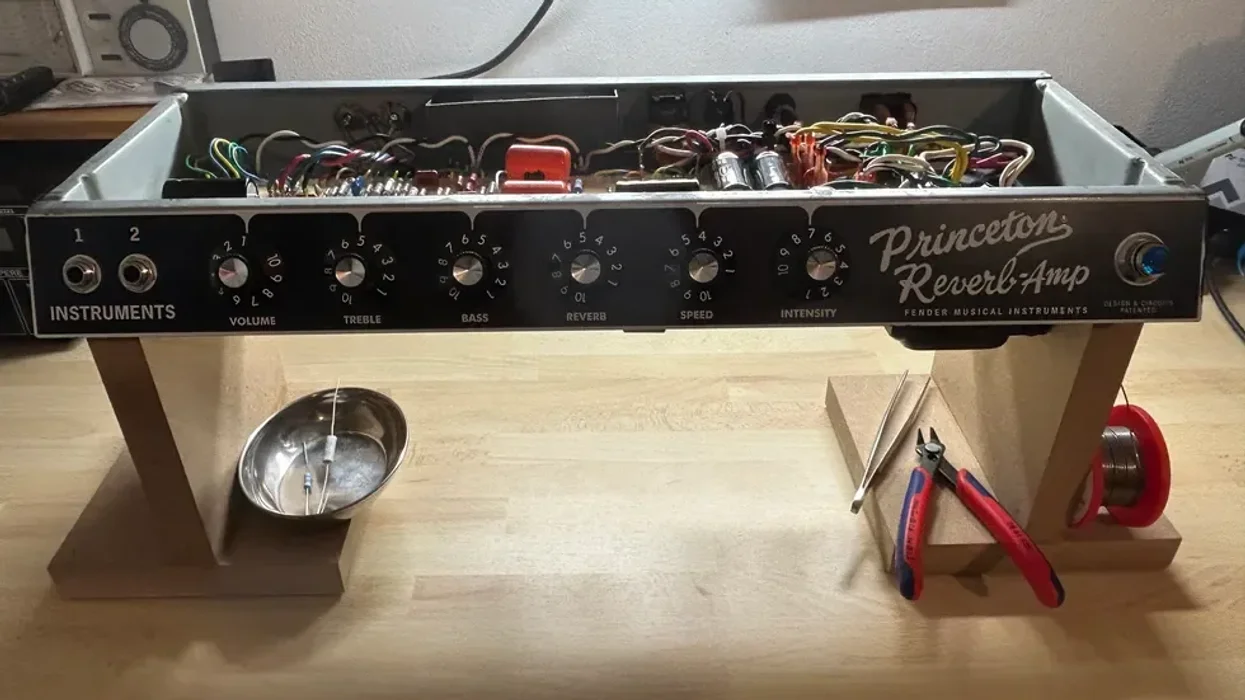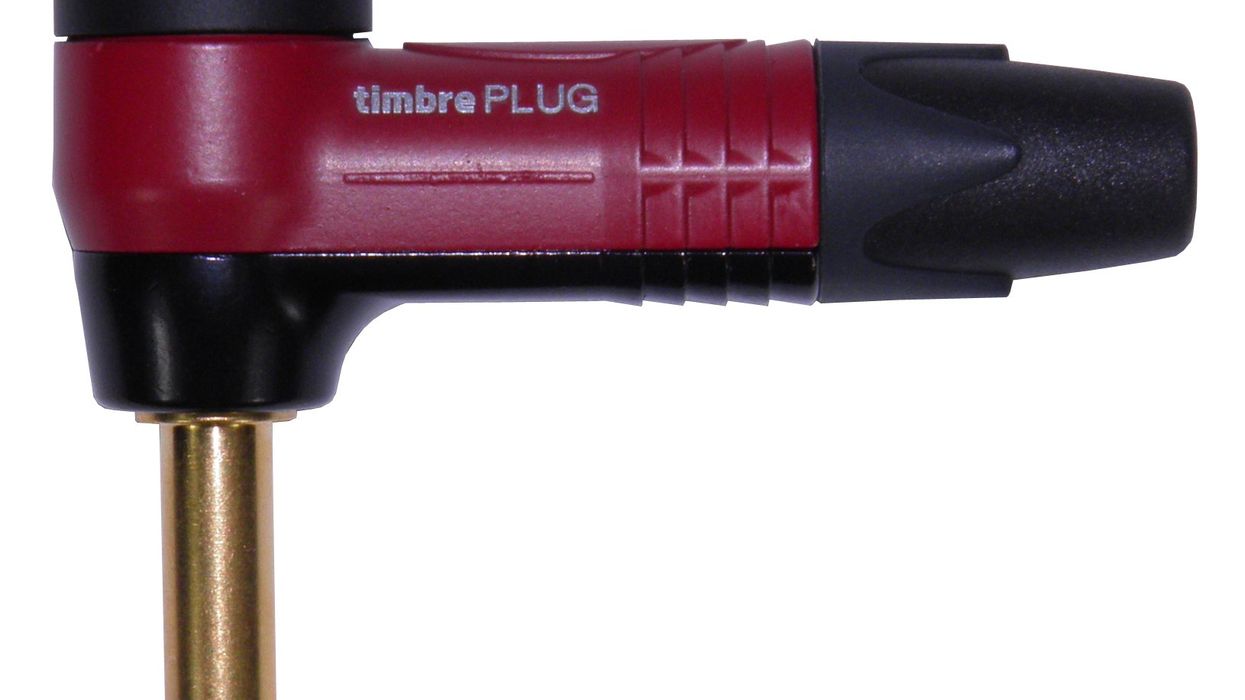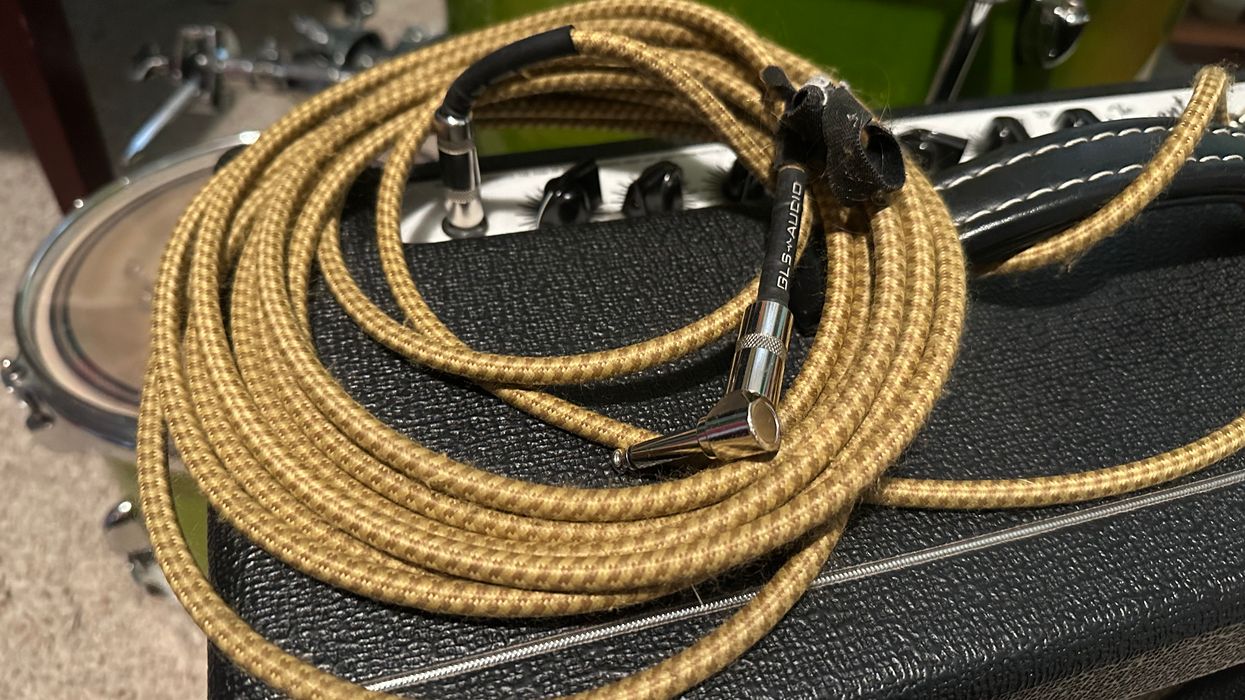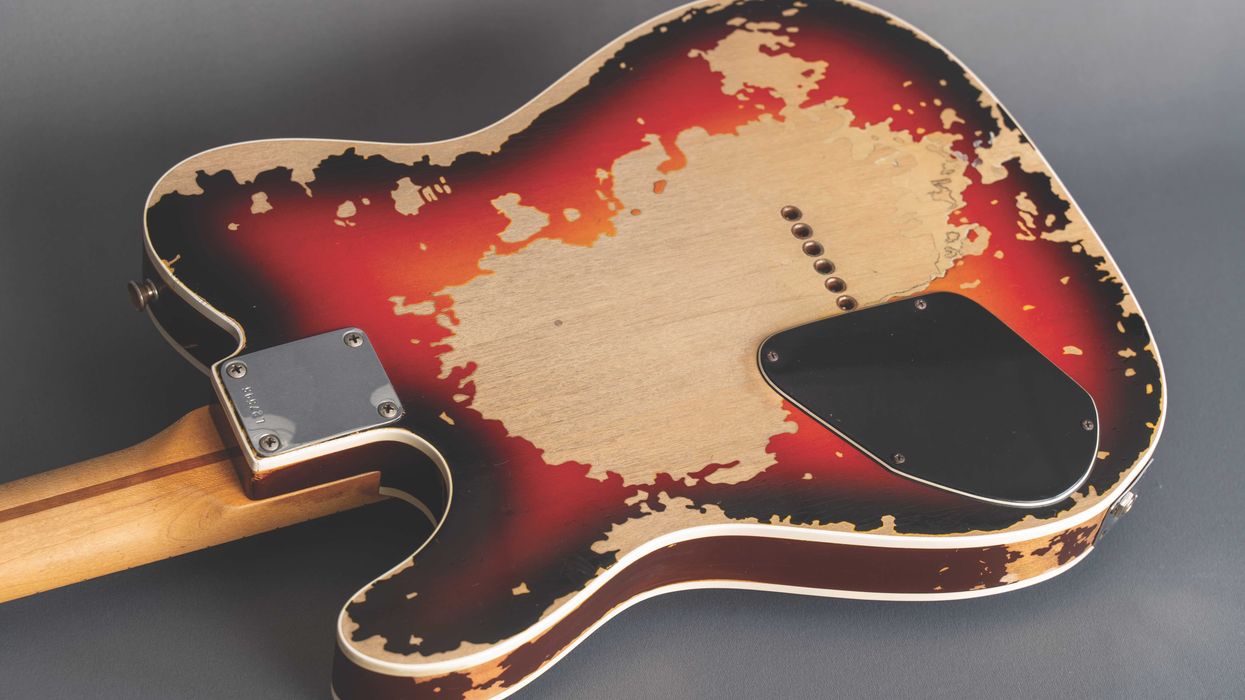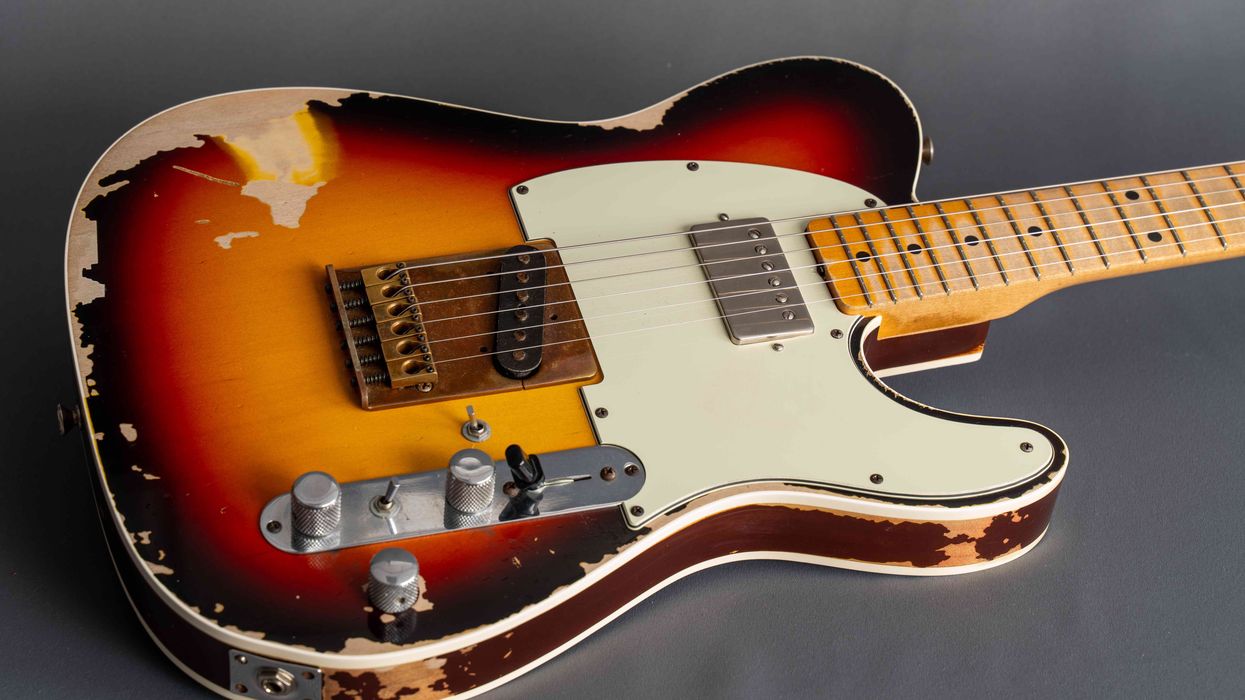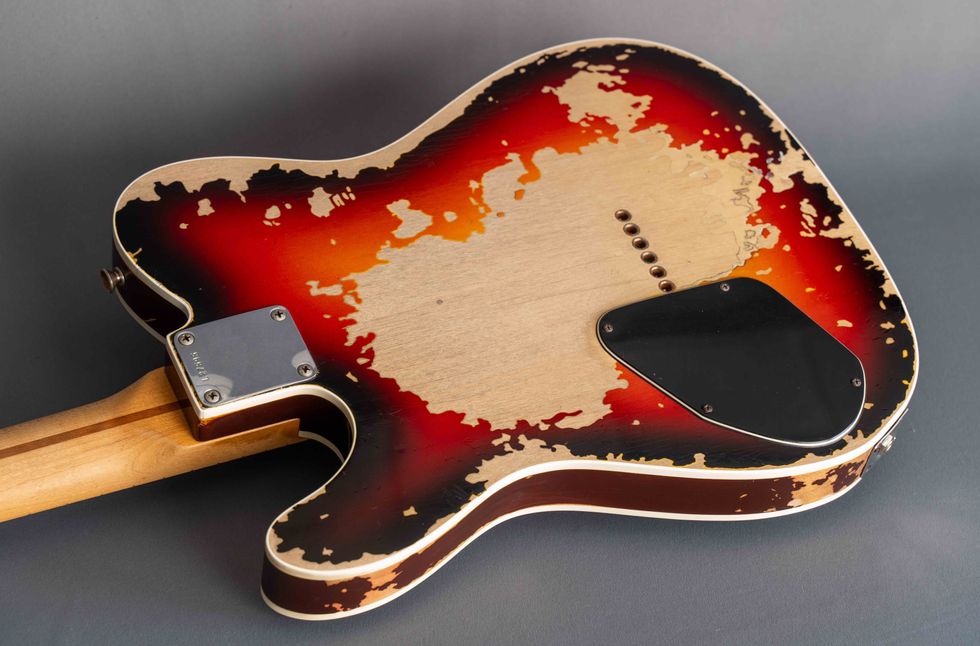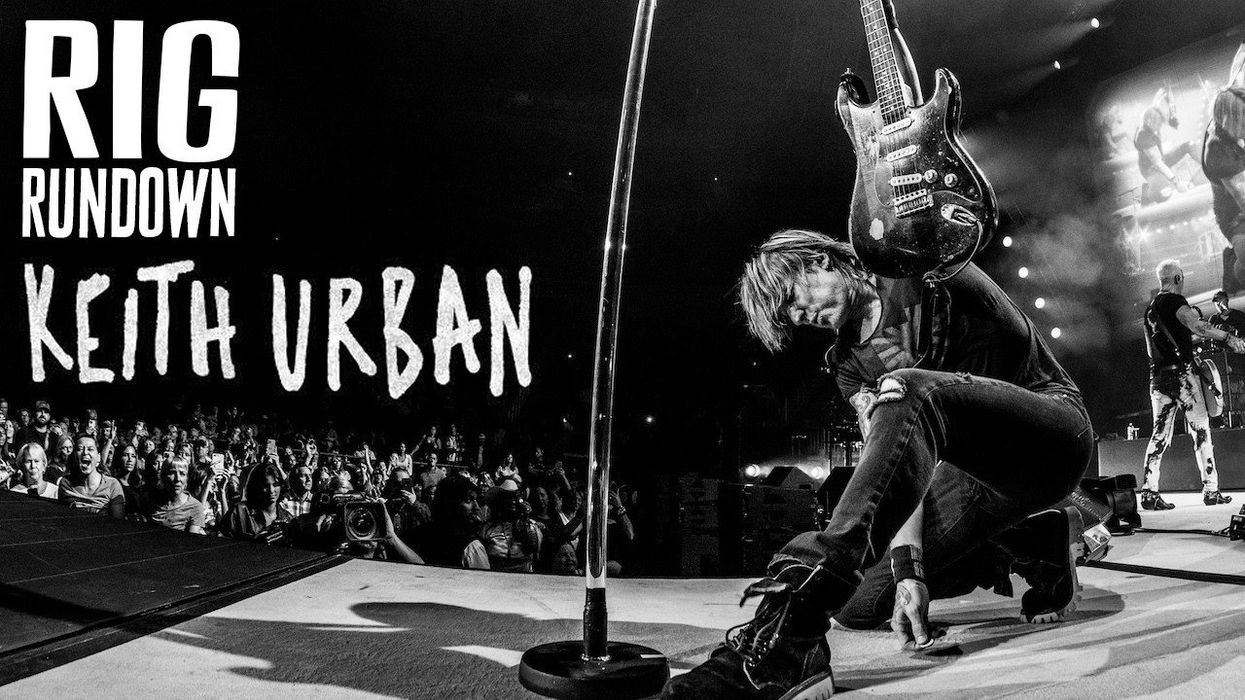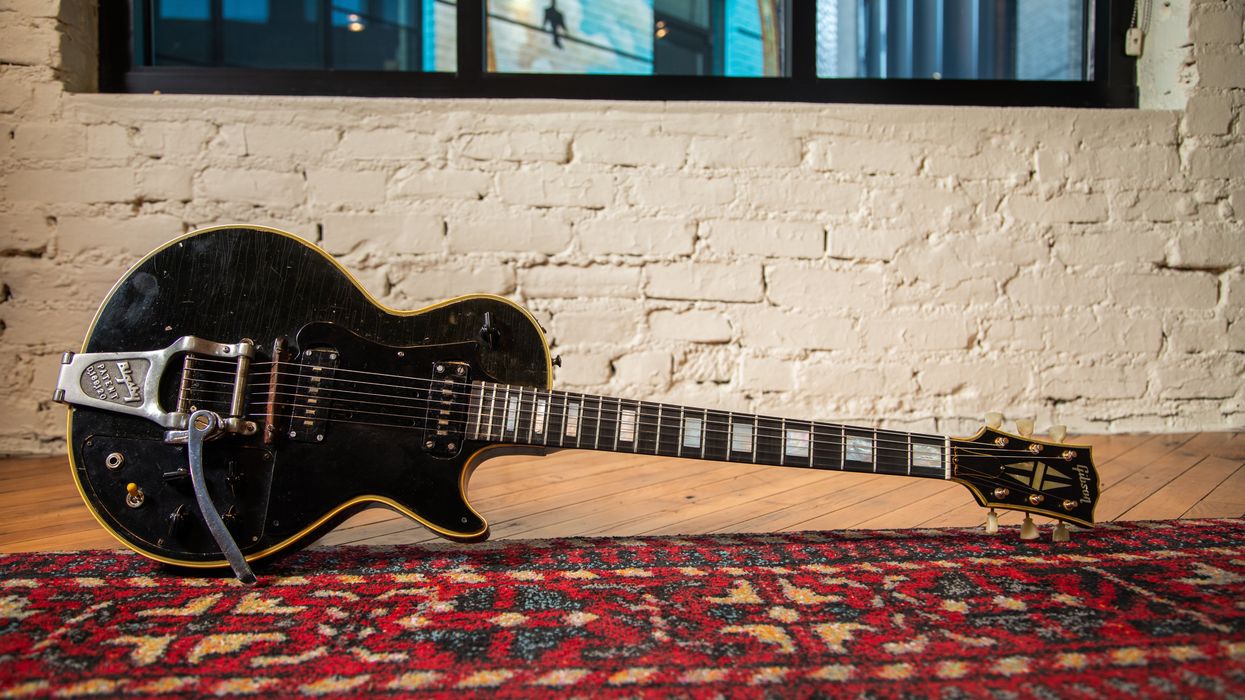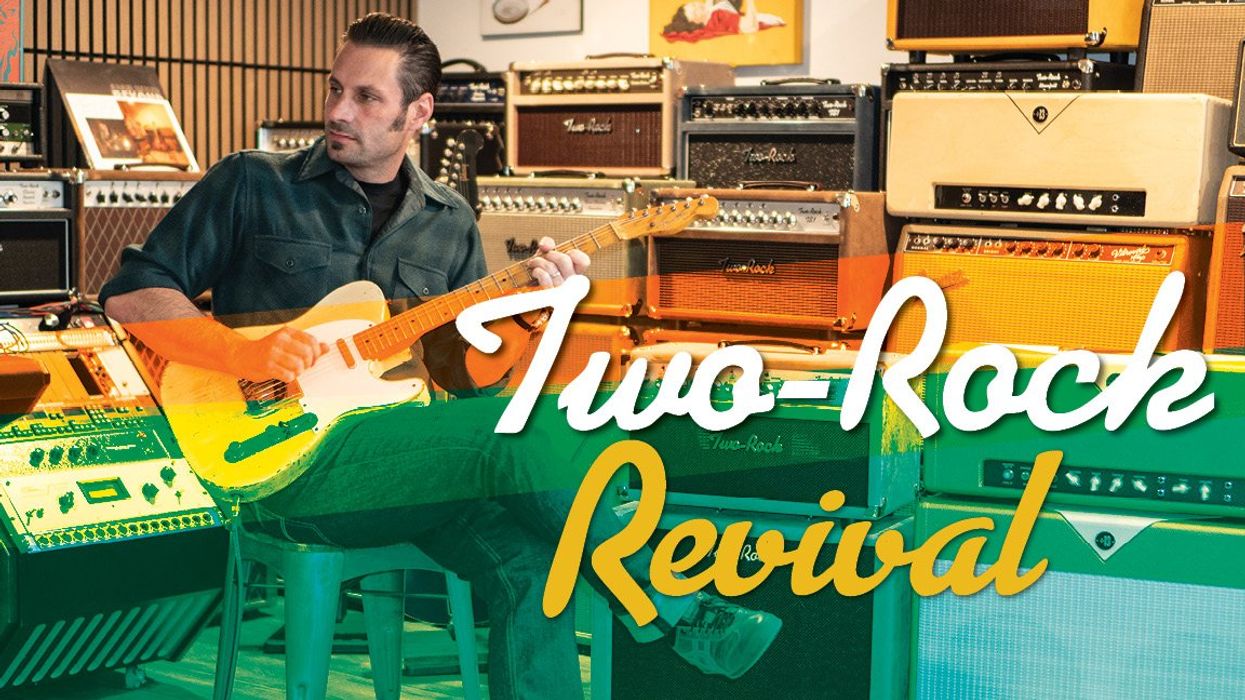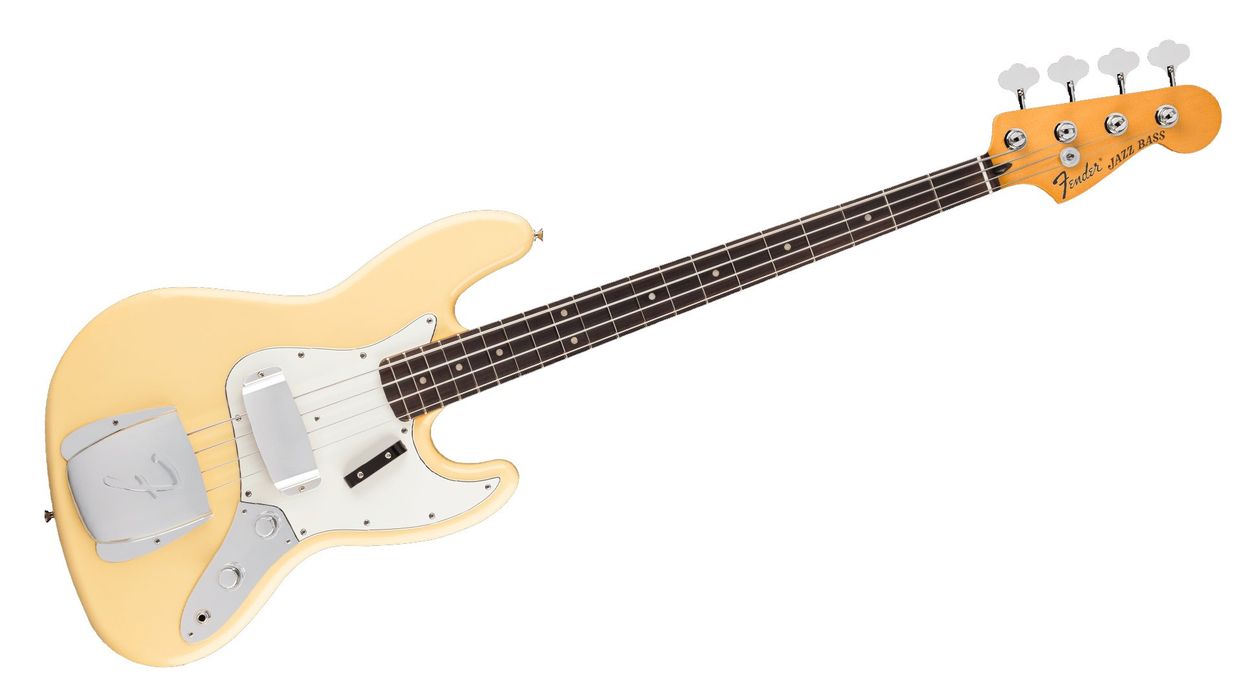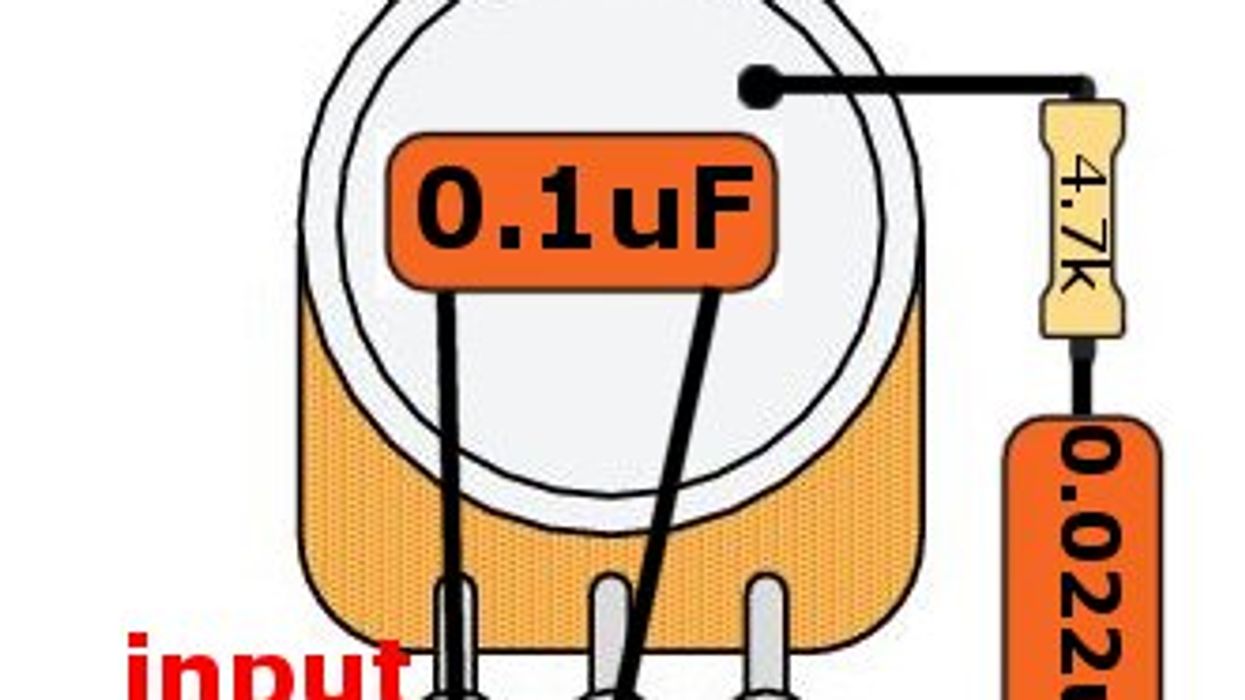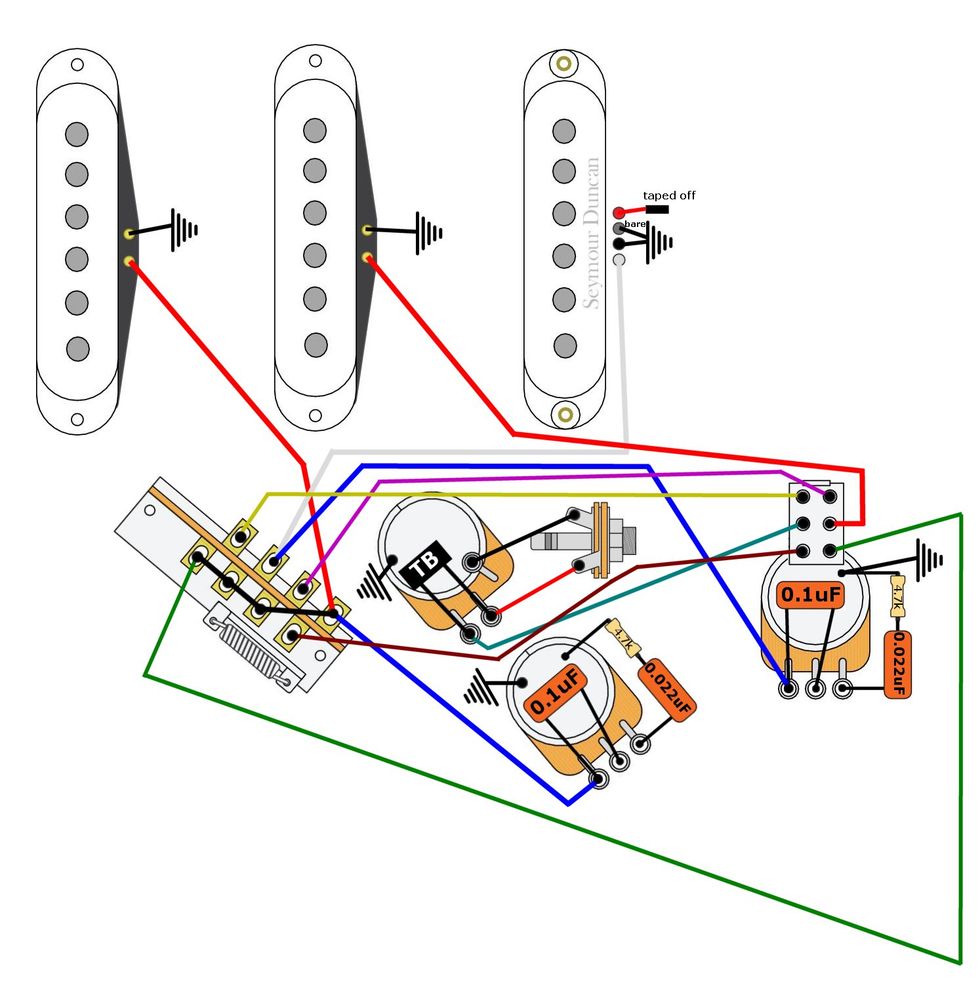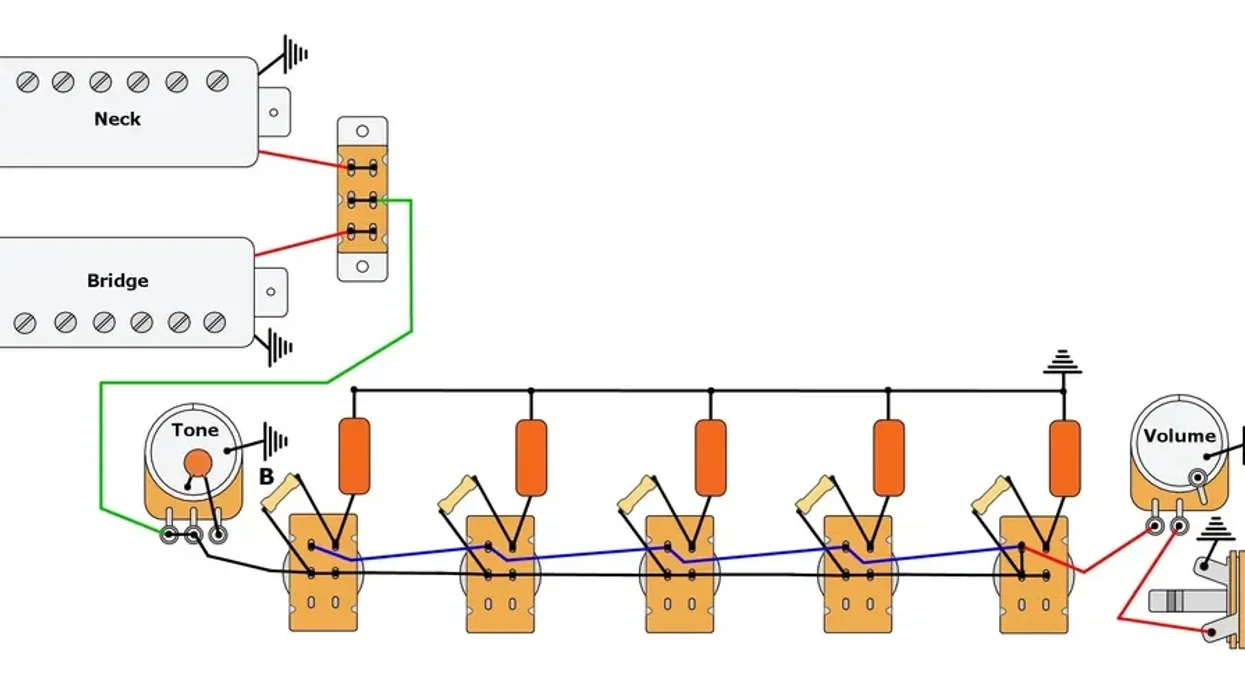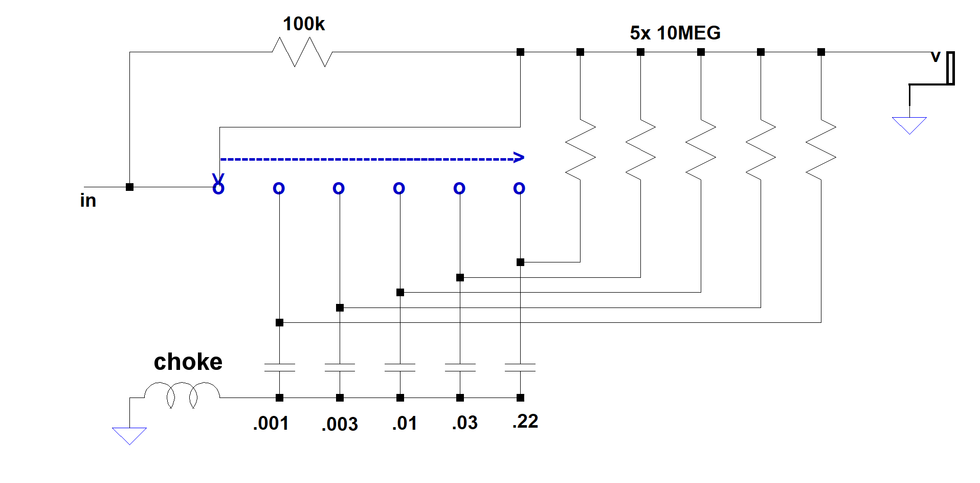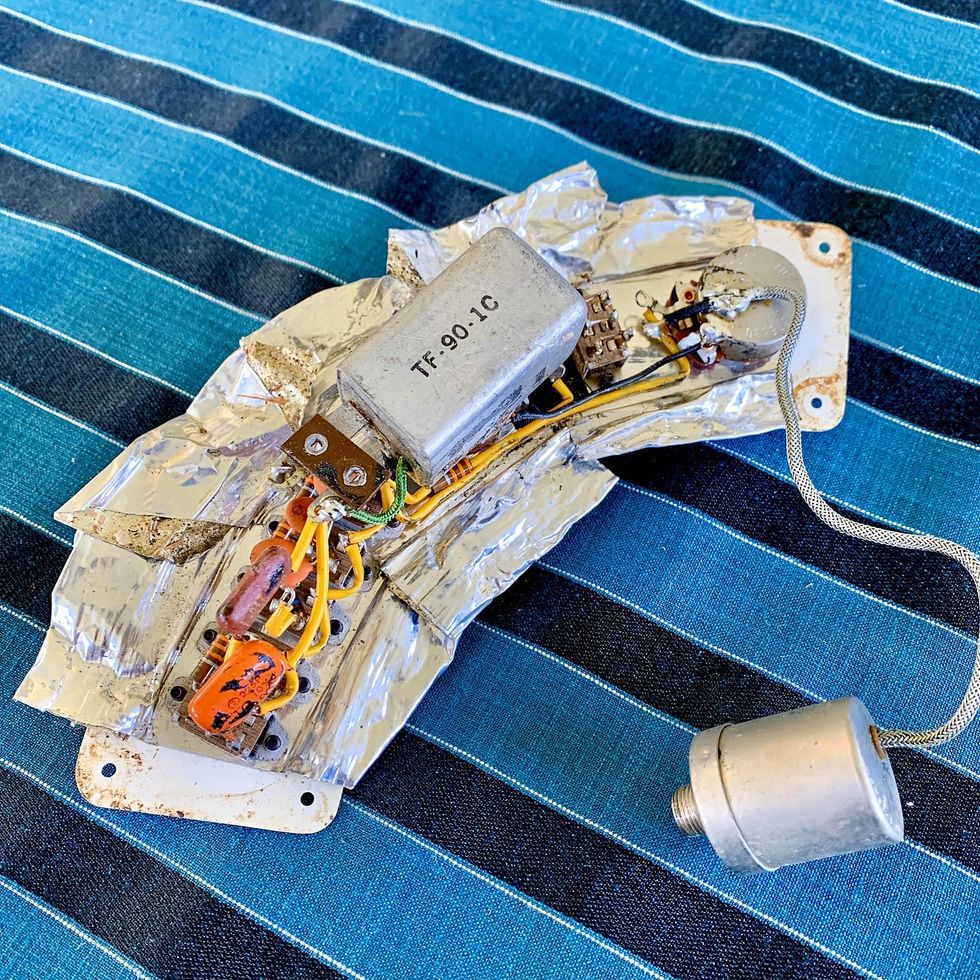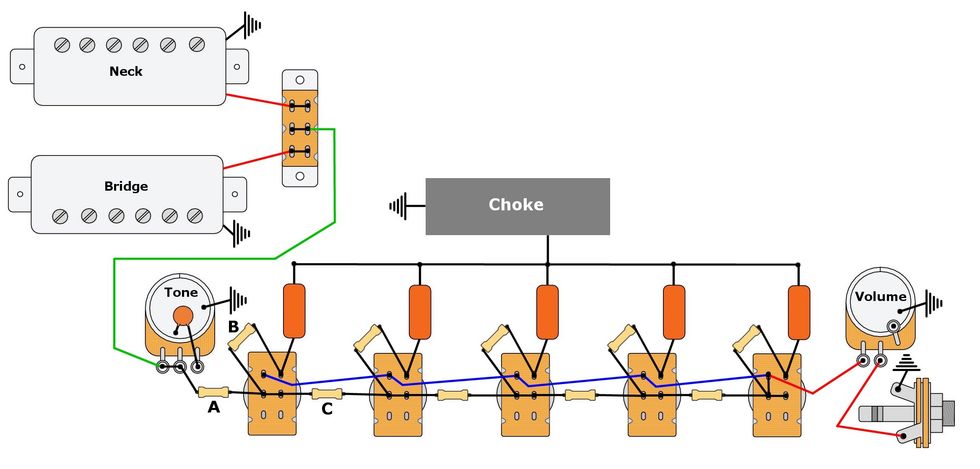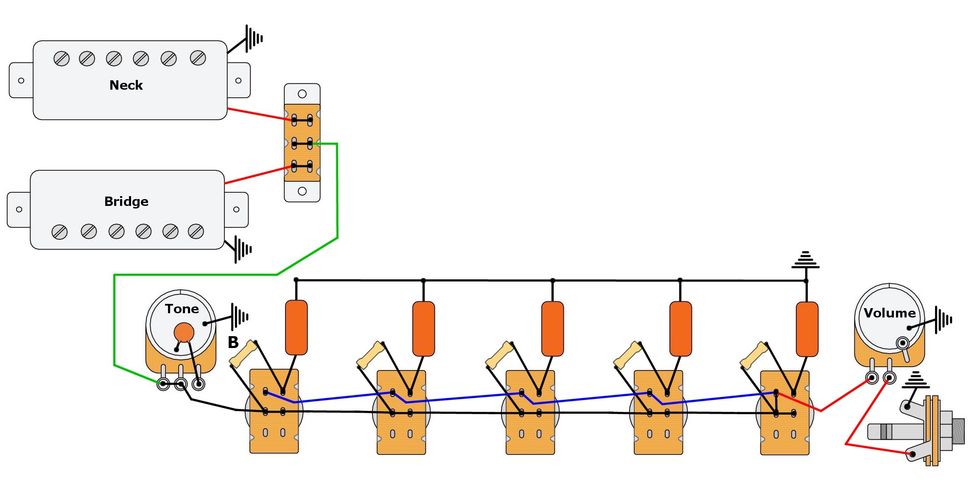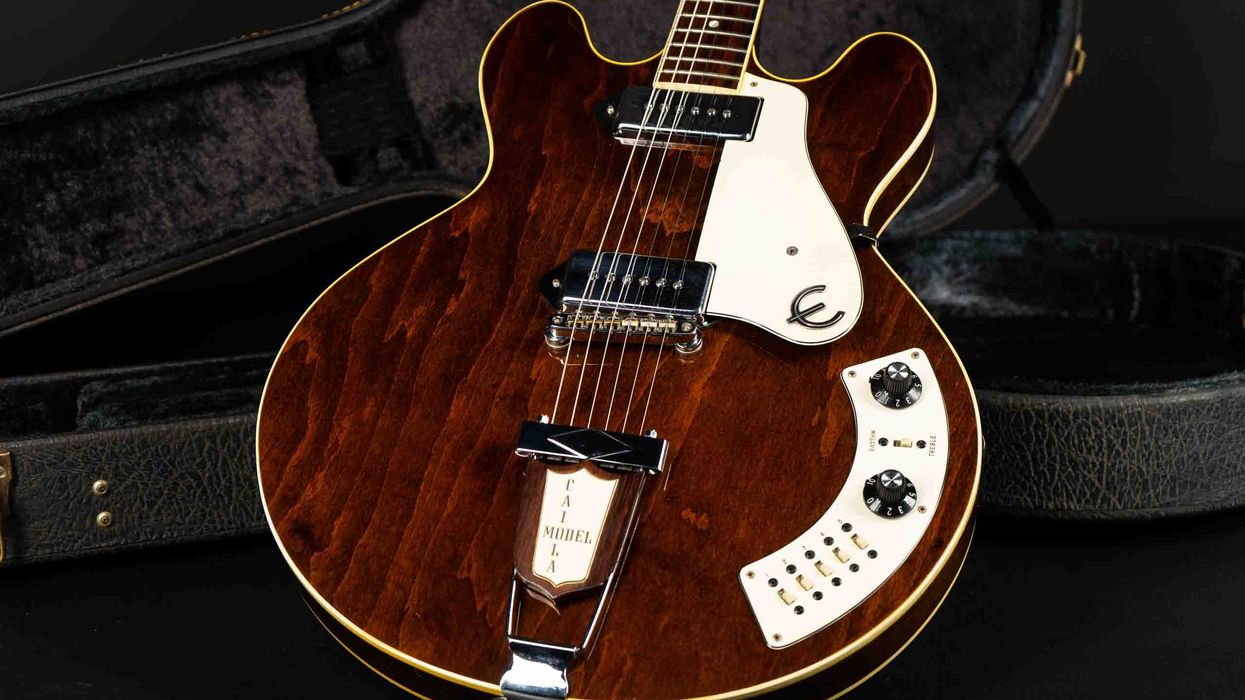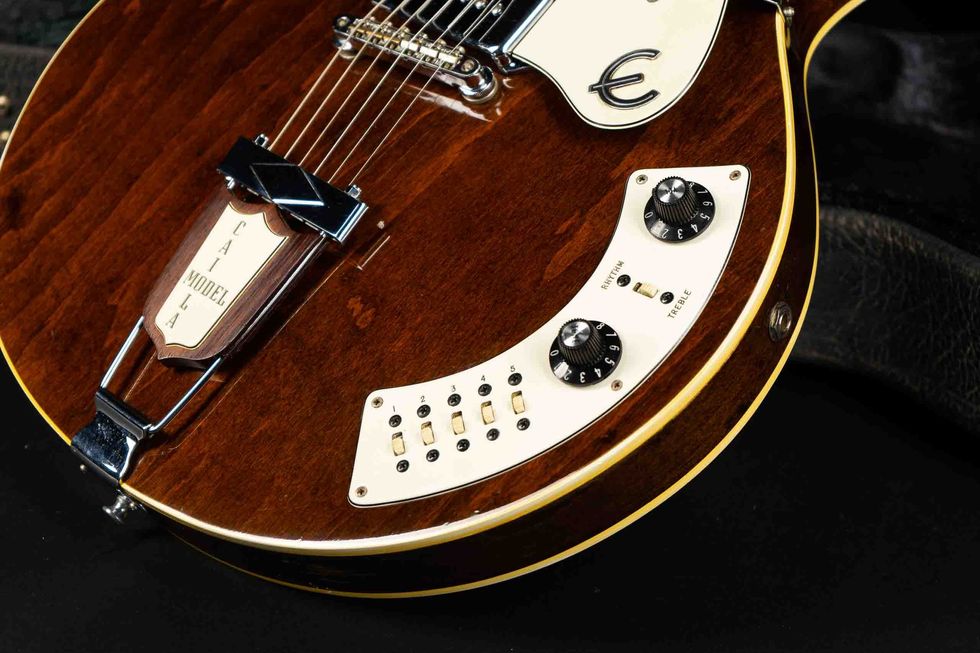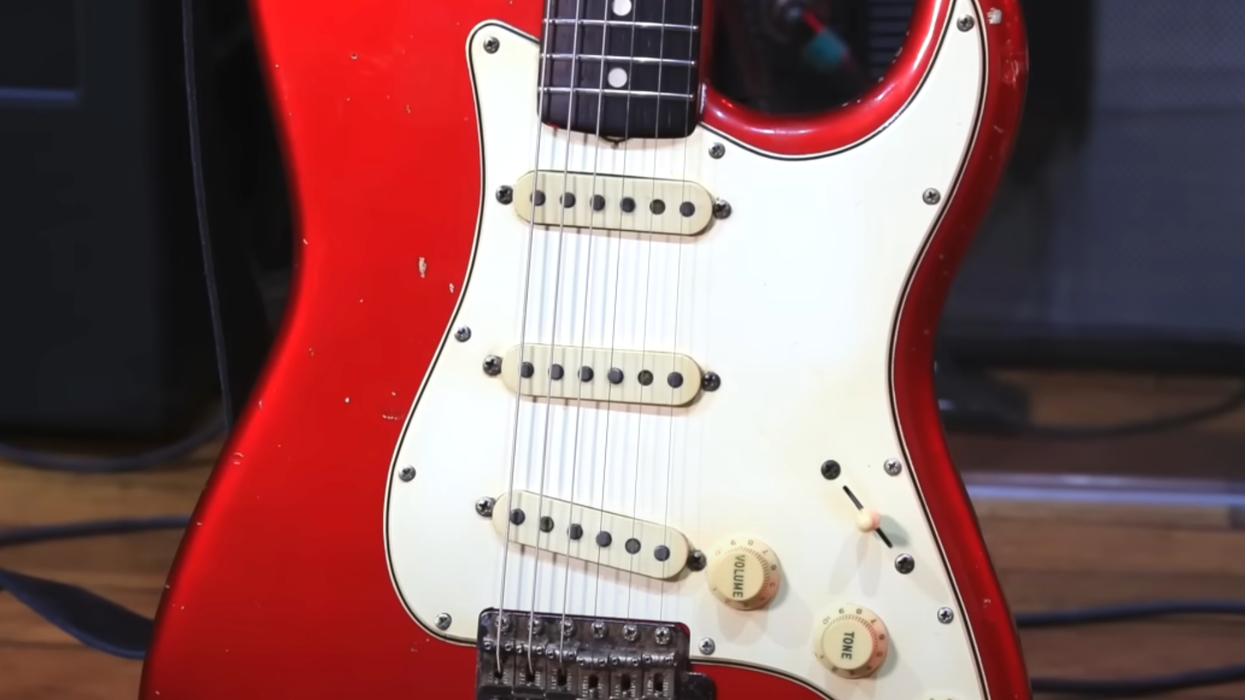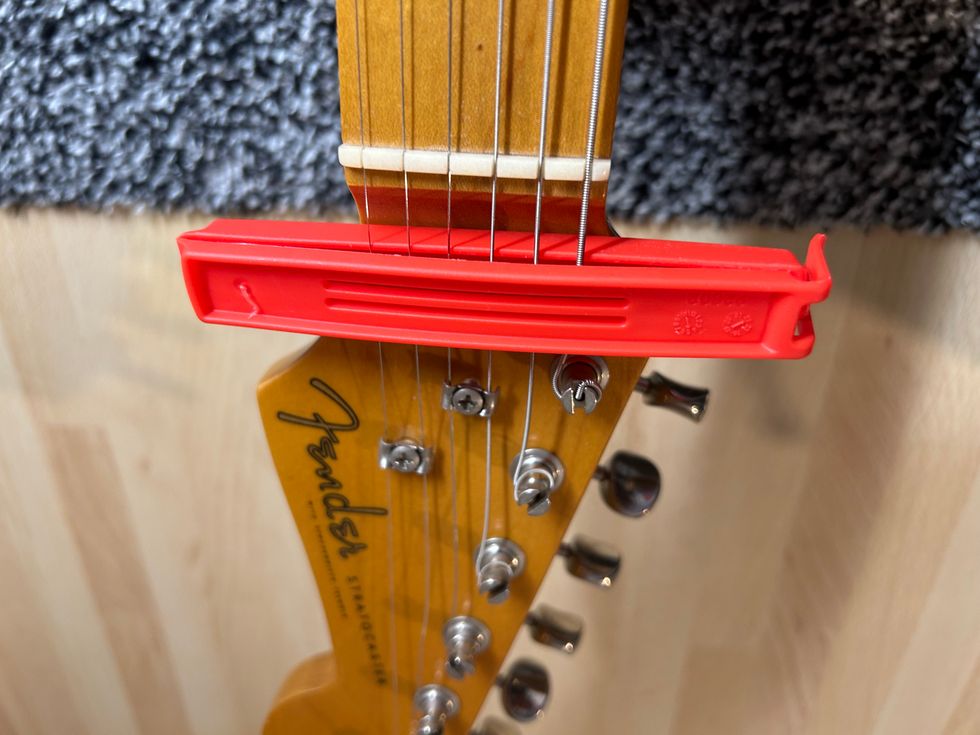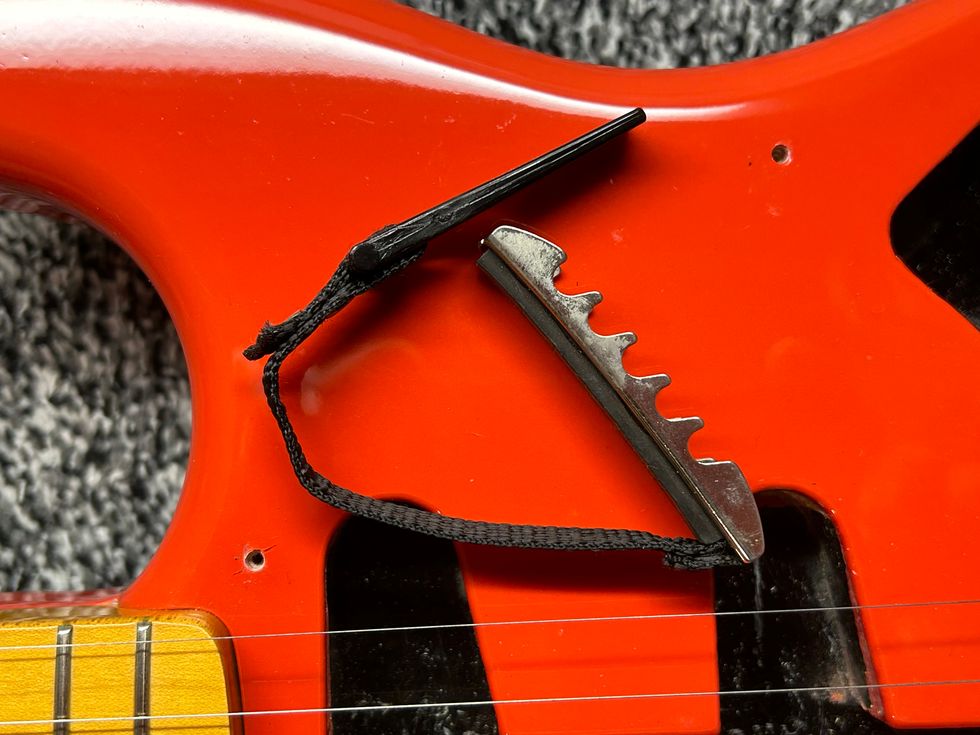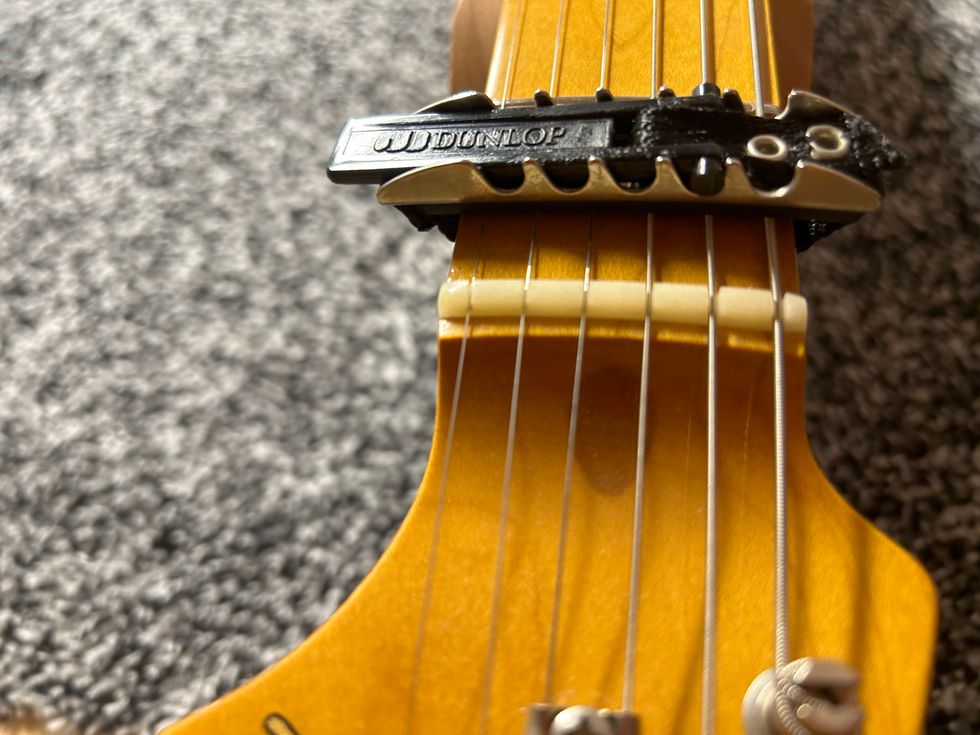Hello, and welcome back to “Mod Garage.” Recently, I’ve received a lot of emails about tone caps for Stratocasters. I’ve discussed capacitors in general a few times before, and those earlier columns are a good place to start if you want to find out more about tone caps for guitars and how to determine the best value for you. Based on those, we’ll dig deeper into the subject, and concentrate on caps for Strats. I can give you advice about what to try based on my experience with different caps and Strats over the years, but there are no fixed rules. It’s your guitar and your sound, and there’s no law that says you can’t try whatever you want.
Be brave and go wild, and maybe you’ll find something by accident that suits you exactly. One customer of mine uses only caps from a specific old German radio from the ‘50s. For him, it’s the perfect tone. If you have some old, obsolete electronic products in your cellar or attic, they’re a good source for some wild experiments. I received an email from a guy in Arkansas who opened up some old military stuff from the ‘50s and found tons of Sprague Bumblebee caps... some of them are now living their second life in his Les Paul and SG guitars, and providing superb tone.
In a nutshell, a capacitor is an electrical/ electronic device that stores energy in the electric field between a pair of conductors (called plates). The process of storing energy in the capacitor is known as charging, and involves electric charges of equal magnitude but opposite polarity building up on each plate. Capacitors are often used in electrical and electronic circuits as energy-storage devices. They can also be used to differentiate between high-frequency and low-frequency signals. This property makes them useful in electronic filters, and that’s exactly what we use them for in our guitars. Basically, our passive tone control can be used to dampen the high frequencies. When you close the tone pot, it rolls off the treble response, resulting in a more mellow tone.
Adjusting this control affects the sound very noticeably, but it’s still recognizably the same guitar. As a basic rule, you could say the bigger the cap, the darker the tone. Depending on the cap’s value, or capacitance, the effect can go from slightly warmer (2200–6800pF) to a “woman tone” (0.01–0.047uF) up to completely dark and “clinically dead” (0.1uF and higher). Another thing to remember is that the tone cap is always part of the circuit and even influences the guitar’s tone when the tone pot is left fully open—that’s the reason the tone cap is such an important part of the sound.
Here are some caps you should try in your Strat:
Orange Drop
These legendary caps were formerly produced by Sprague. Today they’re made by the American company SBE, but with the same old machines and the original tooling of the golden days. They are film types, available in different voltage ratings, sizes, shapes and values. The typical Orange Drop caps we know of are used in high-quality tube amps, especially the 630V types. These have the most “Fendery” tone when used in a Strat: slightly scooped mids and a tight, percussive bass response great for clean playing (and overdrive too). There are several different series available. The most common ones available from guitar parts suppliers are the 715P and the higher-graded 716P series. Both are polypropylene film types. The 225P and the PS series are polyester film types. These are the ones you should try in your Strat. They sound even more “Fendery” than the 715P and 716P series. As a film cap, the Orange Drop caps are non-polarized, so their orientation makes no difference... at least it should make no difference, but that’s a subject for a later column.
Mallory 150
These axial-leaded polyester film caps, or “poly-film” caps, are easy to identify because of their bright yellow color, similar to the old Plessi caps you may know from the Music Man amps. The Mallory 150 caps are made by the Canadian company DuraCap. Because of the axial-leaded shape, they’re very easy to use in guitars. They sound very punchy with a good edge—a perfect Strat tone cap for blues and rock. With overdrive, they sound very mellow and musical. This cap works perfectly with single-coil pickups, but will work with humbuckers as well. If you want a modern, round tone, this is a cap you should try.
ERO Roederstein MKT1813
Made by Vishay, these are also axial-leaded polyester film caps, and they’re also yellow, but not as bright and shiny as the Mallory 150s. They have a very woody and transparent tone; in a Telecaster they can sometimes sound like an acoustic guitar. If your Strat has a very woody and resonant primary tone, this cap will bring it all to the surface when amplified.
NOS Styroflex caps
Often called “polystyrol” caps, you can find them easily on eBay today, even though they’re no longer in production. Polystyrene capacitors are best used for filters, timing circuits, feedback circuits and anywhere high stability and low leakage is important, but they also are great tone caps for guitars, amps and stompboxes. Polystyrene (PS, often called “Styroflex” or “styrol” in Europe) has long been the material of choice for critical analog circuits. Polystyrene caps are a perfect substitute for silver mica caps, but much smaller and easier to find in the typical values we use for guitars. If you want maximum transparency and no tone coloration at all, this is the type of cap you should try.
Next month we’ll talk about paper-in-oil caps, silver mica caps, tropical fish caps, paper waxed caps and the good ol’ NOS “high voltage” ceramic caps from the ‘50s and ‘60s. Until then... keep on modding!

